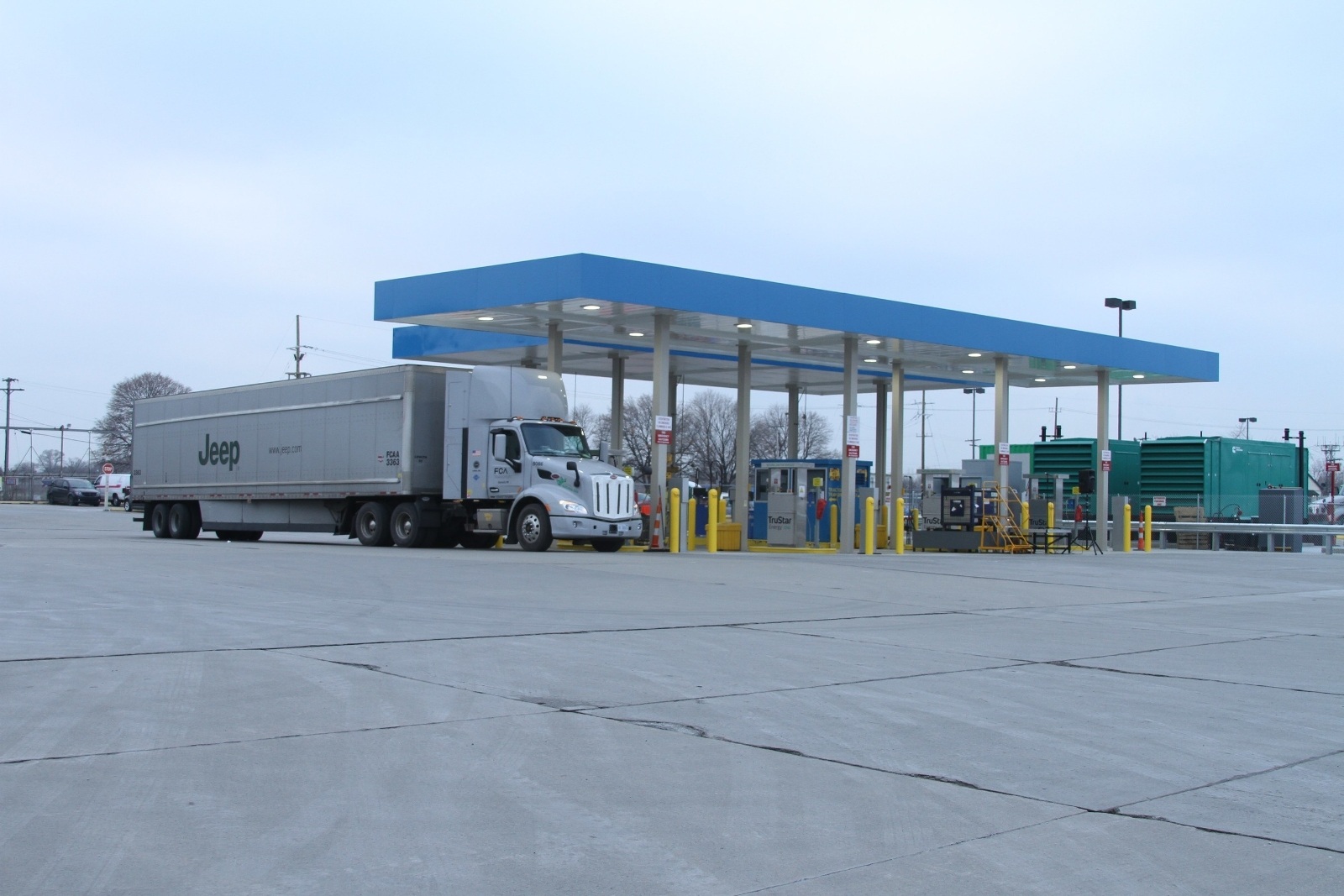CNG station infrastructure types: Fast-fill, Time-fill, and Combination-fill
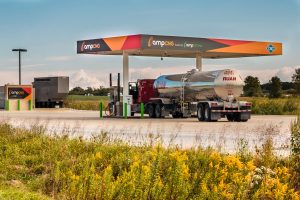
Compressed natural gas (CNG) stations serve various vehicle types and refueling needs, which makes understanding the different types of CNG station infrastructure essential.
Compressed natural gas (CNG) stations serve various vehicle types and refueling needs, which makes understanding the different types of CNG station infrastructure essential. This comprehensive guide will cover the three main types of CNG station infrastructure – fast-fill, time-fill, and combination-fill – and how each caters to distinct vehicle fueling requirements.
Understanding CNG Station Infrastructure Types: Fast-fill, Time-fill, and Combination-fill
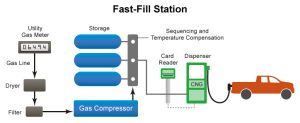
Fast-fill CNG stations are best suited for retail situations where vehicles arrive randomly and need to fill up quickly.
Fast-fill CNG stations are best suited for retail situations where vehicles arrive randomly and need to fill up quickly. All public CNG stations have a fast-fill option. These stations receive fuel from a local utility line at a low pressure and then use a compressor on site to compress the gas to a high pressure. Once compressed, the CNG moves to a series of storage vessels so the fuel is available for a quick fill-up. CNG can also be delivered via dispensers alongside gasoline or other fuel dispensers.
Storage Pressure and Dispensing
CNG at fast-fill stations is often stored in the vessels at a high service pressure (4,300 psi) so the dispenser can deliver it to a vehicle quickly. The dispenser uses sensors to calculate pressure and measure the number of gasoline gallon equivalents (GGEs) delivered to the tank, taking temperature into account.
Enjoying our insights?
Subscribe to our newsletter to keep up with the latest industry trends and developments.
Stay InformedTime-fill CNG Stations: Ideal for Fleet Vehicles with Centralized Refueling

Time-fill stations are primarily used by fleets and work best for vehicles with large tanks that refuel at a central location every night.
Time-fill stations are primarily used by fleets and work best for vehicles with large tanks that refuel at a central location every night. At a time-fill station, a fuel line from a utility delivers CNG at a low pressure to a compressor on site. Unlike fast-fill stations, vehicles at time-fill stations are generally filled directly from the compressor, not from fuel stored in high pressure vessels. The size of the compressor needed depends on the size of the fleet.
Buffer Storage and Fueling Time
Although there is a small buffer storage tank, its purpose is not to fill vehicles but to keep the compressor from cycling off and on unnecessarily — wasting electricity and causing undue wear and tear on the compressor. The storage tank is sometimes used to “top off” vehicle tanks during the day.
The time it takes to fuel a vehicle depends on the number of vehicles, compressor size, and the amount of buffer storage. Vehicles may take several minutes to many hours to fill. The advantage of using a time-fill station is that the heat of compression is less, and this results in a fuller fill than a fast-fill station can provide. Another advantage is that a fleet manager can control when the vehicles are filled, such as during off-peak hours like at night when electricity rates are lower.
Design Considerations for Time-fill Stations
Time-fill stations are carefully designed based on the intended use. For example, a transit bus company may need a larger compressor that can deliver eight to nine gallons per minute, while a refuse truck company can make do filling trucks at three gallons per minute using a smaller compressor. A consumer application may require far less — such as less than one gallon per hour. These differences account for the large variance in the cost of installation.
Combination-fill CNG Stations: Flexibility for Mixed Fleet Applications
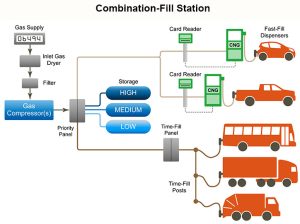
Combination-fill stations include both the fast-fill and time-fill components in one system. This design gives a fleet flexibility and caters to various refueling needs.
Combination-fill stations include both the fast-fill and time-fill components in one system. This design gives a fleet flexibility and caters to various refueling needs. The vehicles connected to the time-fill posts are filled directly from the compressor, usually overnight. Vehicles at the fast-fill dispensers are filled from the storage vessels or from the compressor, depending upon need.
Cost and Revenue Opportunities
Combination-fill stations typically cost more to build than the previous two station types. However, they can also be a revenue source if the fast-fill dispensers are made available to the public. This dual functionality allows fleets to optimize their infrastructure investments and generate additional income from retail customers.
Choosing the Right CNG Station Infrastructure
When selecting the most appropriate CNG station infrastructure type, consider the following factors:
- Vehicle types and fleet size: Different vehicle types and fleet sizes require varying storage capacities and compressor sizes. Assess your fleet and choose an infrastructure that meets the specific needs of your vehicles.
- Refueling patterns: Analyze the refueling habits of your vehicles. Time-fill stations are more suitable for centralized refueling, while fast-fill stations cater to random, on-the-go refueling needs.
- Budget constraints: The cost of installation varies significantly between the different types of CNG station infrastructure. Evaluate your budget and choose an option that provides the most value for your investment.
- Revenue opportunities: Combination-fill stations can generate revenue by offering fast-fill services to the public. Weigh the potential income against the higher initial investment cost when deciding on a station type.
Conclusion
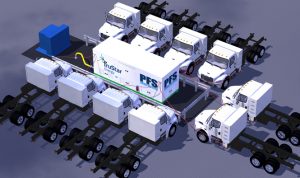
Understanding the different types of CNG station infrastructure is crucial for choosing the best refueling solution for your vehicles.
Understanding the different types of CNG station infrastructure is crucial for choosing the best refueling solution for your vehicles. Fast-fill, time-fill, and combination-fill stations each have distinct advantages and cater to unique vehicle fueling needs. By carefully considering factors such as vehicle types, fleet size, refueling patterns, and budget constraints, you can make an informed decision and optimize your CNG refueling infrastructure.
For more information on Alternative Fuels and your fleets adoption, visit Top 8 Alternative Fuel Vehicles Incentives and Programs for Fleet Adoption.
Learn more about CNG station infrastructure types from the U.S. Department of Energy: [https://afdc.energy.gov/fuels/natural_gas_infrastructure.html]

